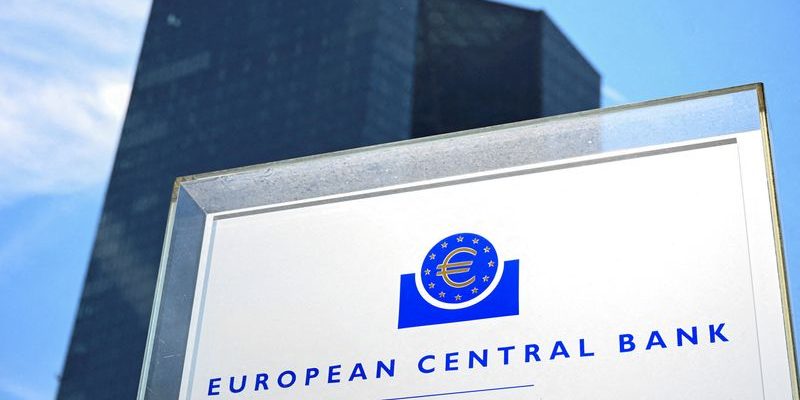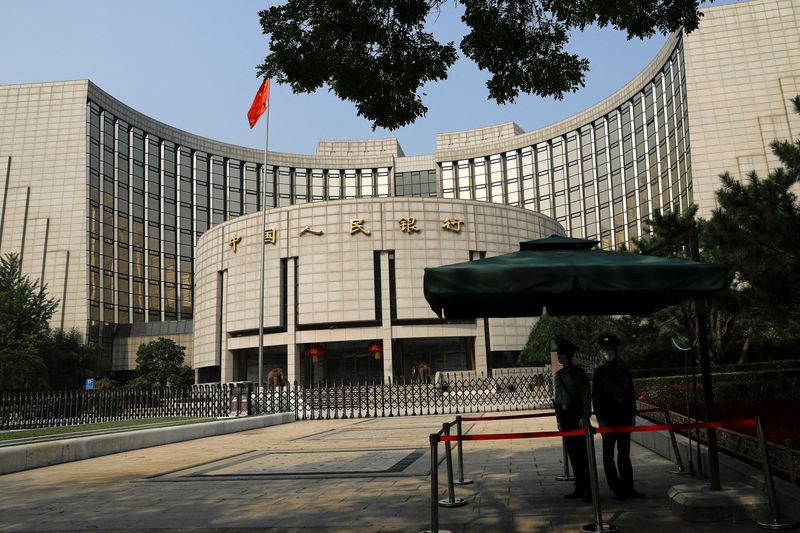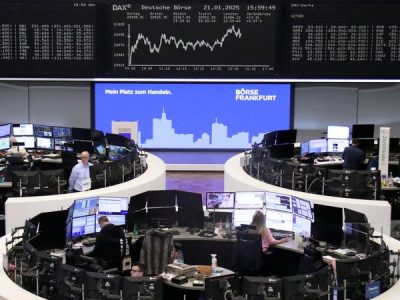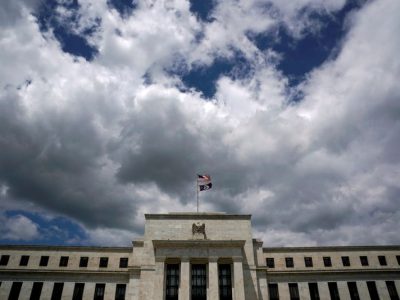
By Mike Dolan
LONDON (Reuters) – The market’s best guess is the European Central Bank won’t step on the accelerator over the coming cycle – which is either way off beam or extremely worrying.
Based on current money market projections, the ECB’s overall interest rate setting is expected to continue to act as at least a mild drag on the slow-growing bloc over the next two years even as it gradually reduces its main policy rate.
Avoiding an undershooting of its 2% inflation target and maintaining positive growth without switching to a stimulative stance seems like a tall order given the deep-seated problems the region has faced for more than a decade.
The ECB has already jumped ahead of the Federal Reserve and will likely have cut its key interest rate for the second time this cycle before the Fed even gets going later this month.
That makes intuitive sense. The euro zone economy has been far weaker than its U.S. counterpart over the past two years.
And Europe is much more vulnerable to China’s worrying economic funk and the global manufacturing downturn, given that manufacturing makes up 20% of the German economy and 15% of the wider euro zone’s.
Disinflation – especially in core goods prices – has been rapid, and the ECB’s inflation targets are in sight.
But the conundrum is less about why ECB easing is already underway than where it’s expected to end up.
Right now, money markets see ECB policy rates bottoming out over the next 12 to 18 months at about 2.10%-2.20%.
But assuming, as the ECB does, that inflation will durably fall back to its 2.0% goal before 2026, then markets are implying that “real” ECB rates will remain in positive territory throughout the cycle.
That mean rates would remain above where most ECB policymakers guess the fabled “R-star” neutral rate currently is.
What’s more, while the market assumes ECB rates will ultimately remain more than 125 basis points (bps) below Fed equivalents, current pricing also suggests the Fed will ease by 50 bps more than the ECB over the entire cycle through the end of next year.
Some of the market caution has been guided by ECB officials, of course, many of whom are adamant they still need to tamp down elevated service sector inflation and rapid wage growth.
By restating their determination to keep policy somewhat tight regardless of the growth implications, officials may also be playing a psychological game to keep inflation expectations low.
Last week, ECB board member Isabel Schnabel highlighted the importance of policy “perseverance” and the central banks’ “perceived commitment” to meeting its targets as necessary for price stability to be restored after a shock.
And, intriguingly, she suggested the murkiness surrounding the neutral rate might make determining the terminal rate a bit of a guessing game.
“The closer policy rates get to the upper band of estimates of the neutral rate of interest – that is, the less certain we are how restrictive our policy is – the more cautious we should be,” Schnabel said in a speech in Tallinn.
UNDERSHOOT OR STAGFLATION?
All of this might go some way to explaining why the ECB is reluctant to sound the “all clear”, but not why the market seems so tentative about betting on a monetary spur re-emerging.
Unless key structural aspects of the euro zone economy have radically changed since the pandemic, then the ECB will likely have to act aggressively to re-stimulate the slow-growing region.
For a start, the significant slowdown in global manufacturing and Europe’s still growing direct trade links with an ailing Chinese economy suggest the euro zone faces the real risk of both negative growth and even deflation in the coming year.
For instance, Barclays recently pointed out that annual core goods inflation in the euro zone fell to just 0.4% in July, as headline inflation in the region retreated to 2.2%.
Meanwhile, annual Chinese factory goods price deflation remains meaningful.
Hedge fund manager Stephen Jen has long warned that Western countries could significantly undershoot inflation expectations and slip into outright deflation as supply quirks responsible for the majority of the recent inflation shock unwind. And he restated that belief last week.
“There is likely to be a period of outright deflation, I still believe,” he said.
If that constellation is to unfold, then how can the market not be pricing in a high probability that the ECB will need to dramatically shift its monetary policy stance moving ahead?
Bear in mind that prior to October 2023, “real” ECB policy rates had spent all but one month of the prior decade in negative territory.
Has that much changed since the pandemic? True, geopolitical upheaval has shifted the playing field and access to cheap Russian gas has disappeared.
But much weightier drags on the region’s economic potential are much the same as they were in late 2019, not least the ageing demographic profile of the euro bloc, which stands in stark contrast to the brighter picture stateside.
Of course, the reason the ECB may not be expected to move into a truly stimulative policy stance over the cycle is that it may not be able to.
Deutsche Bank’s credit team recently highlighted surveys showing that bloc-wide employment is deteriorating even as underlying wages and price growth still remain too high for many central bank officials.
“Sticky inflation could introduce more noise into the ECB’s reaction function, biasing the ECB too hawkishly relative to European growth trends,” Deutsche’s Steve Caprio and team wrote last month.
But when trying to find the signal through all this noise, it seems that undershooting inflation expectations should be the bigger concern for the ECB and markets.
The opinions expressed here are those of the author, a columnist for Reuters
(By Mike Dolan; Editing by Jamie Freed)












